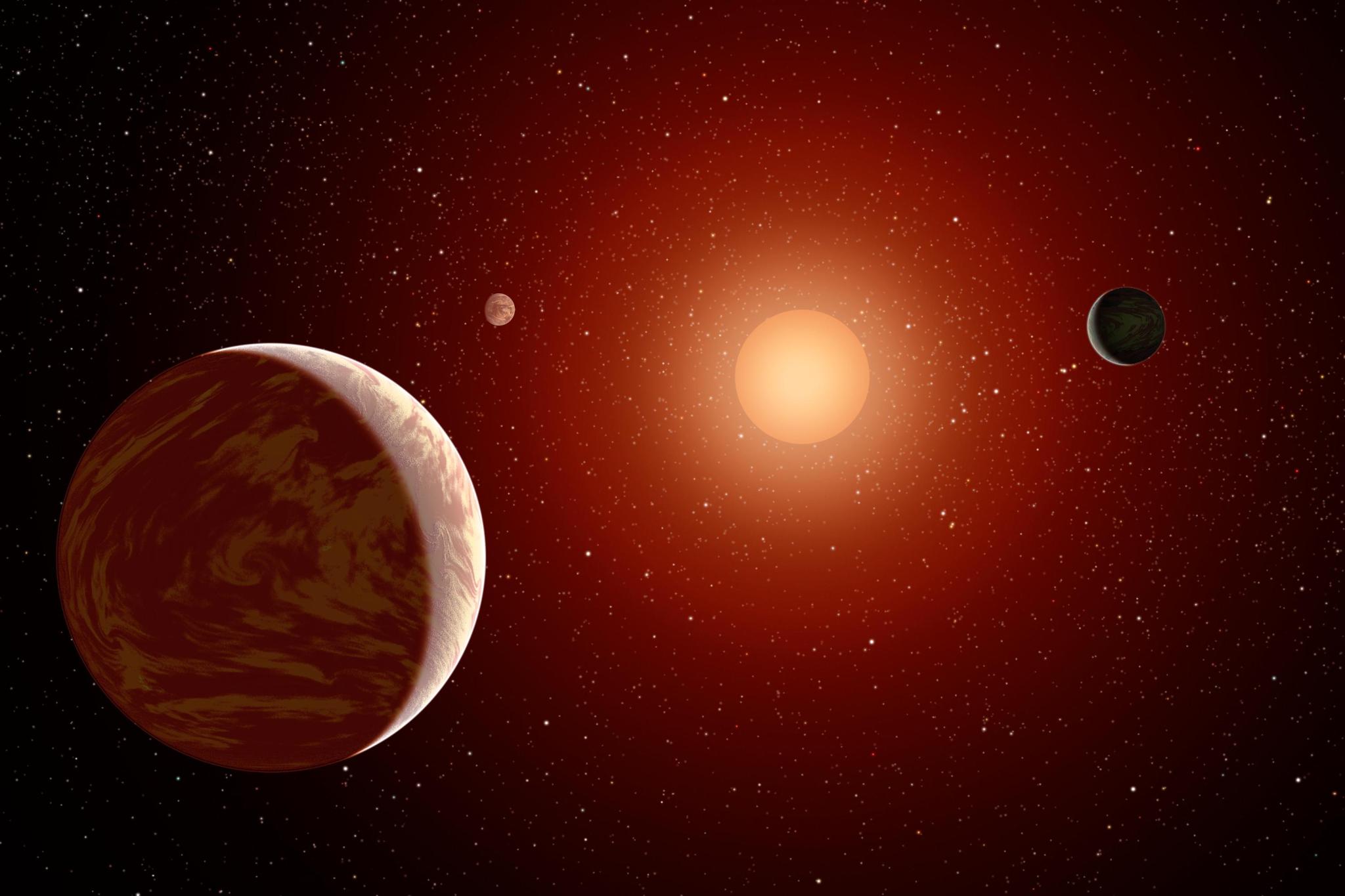Scientists may have found a way to tell if alien worlds have a climate that is suitable for life by analyzing the light from these worlds for special signatures that are characteristic of a life-friendly environment. This technique could reveal the inner edge of a star’s habitable zone, the region around a star where liquid water could exist on the surface of a rocky planet.
“Habitable planets by definition have water on their surfaces,” said Eric Wolf of the University of Colorado, Boulder. “However, water can come in the forms of ocean, ice, snow, vapor, or cloud. Each of these forms of water have very different effects on climate. However, each form also has specific effects that we may be able to detect on these planets, and use to determine whether or not a planet may have a habitable climate state.” Wolf is lead author of a paper on this research published May 22 in the Astrophysical Journal.
Location determines value of real estate on Earth and in the cosmos as well. If a planet or planetary body is too close to its host star, the star’s intense light and heat cause the planet’s oceans to evaporate and eventually be lost to space. This climate state, called a “runaway greenhouse,” can be seen in our solar system on Venus, the next planet closer to the Sun than Earth. Venus is almost the same size as Earth and may have had oceans, but they vanished long ago as the planet’s proximity to the Sun caused a runaway greenhouse state. Now the parched surface of Venus swelters under an atmosphere about 100 times the pressure of Earth’s, with temperatures hot enough to melt lead. Conversely, if a planet or other planetary body is too far away from its host star, the oceans freeze, as can be seen in the icy moons of the outer solar system like Europa and Enceladus.
Liquid water on a planet is a big deal because it’s necessary for life as we know it. Where there is liquid water, there may be life. The range where the distance is right for a climate that allows liquid water to persist on a planet’s surface is called the star’s “habitable zone”.
Since we don’t have the ability to travel to planets around other stars (exoplanets) due to their enormous distances from us, we are limited to analyzing the light from exoplanets to search for a signal that the climate might be habitable. By separating this light into its component colors, or spectrum, scientists can identify the constituents of an exoplanet’s atmosphere, since different compounds emit and absorb distinct wavelengths (i.e. colors) of light. An exoplanet’s spectrum resembles a wavy line with peaks where the colors are bright and valleys where colors are dim. The researchers simulated an exoplanet’s emitted infrared spectrum, which is the heat-energy given out by an exoplanet, either due to its internal heat and/or the exoplanet heated by the star and then re-radiated. Infrared light is invisible to the human eye but detectable with special cameras and instruments on telescopes.
In the new work, the researchers found that the appearance of the spectrum changes in distinct, signature ways for each climate state. “Different climate states — cold, warm and ‘runaway greenhouse’ which is very warm — have different amount of water-vapor in the atmosphere,” said Ravi Kopparapu, a co-author of the paper at NASA’s Goddard Space Flight Center in Greenbelt, Maryland. “Different amounts of water vapor cause changes in the emitted radiation from the exoplanet, which changes the ‘spectra’, i.e., how much energy is emitted from each color and therefore how bright each color appears.”
In the simulations, exoplanets much colder than Earth can still be habitable because they have small amounts of liquid water when these planets orbit close to the star. An ideal habitable exoplanet case is “temperate” with temperatures about the same as our Earth, and has elevated amounts of water vapor in the atmosphere compared to a cold exoplanet. The runaway greenhouse state has even more atmospheric water vapor. The findings raise the possibility that hot and moist climates, like a runaway greenhouse state, can potentially be identifiable in the appearance of the spectrum of exoplanets, and by observing how the spectrum changes as the exoplanet orbits its host star. According to Kopparapu, if correct, this gives a way to find the inner edge of the habitable zone with observations, which so far has only been simulated with climate models. The team is proposing a method to test this with observations.
The idea of using an exoplanet’s emission and reflection spectrum to assess habitability has been proposed before. In the new work, the team simulated the spectra from exoplanets around a variety of stars smaller and fainter than our Sun, called M and K stars. They found specific features that could differentiate a runaway greenhouse state from habitable states, and hence, could be used to locate the inner edge of the habitable zone. The team used a 3-D climate model from the National Center for Atmospheric Research, called the Community Atmosphere Model, and modified it to suit for habitable exoplanets, naming it “ExoCAM”.
Although M and K stars are fainter than stars like our Sun, they are far more common. Since searching for life elsewhere in the universe is partly a game of chance, researchers are interested in the exoplanets orbiting these abundant stars, and these signatures can help determine which worlds are worth a closer look. They simulated exoplanets with Earth-like atmospheric pressures, with an Earth-like amount of oceans and only water vapor and nitrogen as gases. They are in the process of expanding the study to change these parameters, to see how robust and unique their prediction is that one can identify the inner edge of the habitable zone with changes in an exoplanet’s infrared spectrum.
Because these spectra are faint, an exoplanet will have to be relatively close to have its habitability assessed. “With NASA’s James Webb Space Telescope, determining habitability may be possible for an exoplanet around a very bright, very small M star that’s pretty close to us, maybe less than 50 light years,” said Kopparapu. A light year, the distance light travels in a year, is almost 6 trillion miles. For comparison, the closest stars beyond our Sun are found in the Alpha Centauri system a little over four light years away, and our galaxy is about 100,000 light years across.
The research was funded by Goddard’s Sellers Exoplanet Environment Collaboration (SEEC), the NASA Astrobiology Program’s Virtual Planetary Laboratory, and benefited from participation in the NASA Nexus for Exoplanet Systems Science research coordination network. NASA is exploring our Solar System and beyond, uncovering worlds, stars, and cosmic mysteries near and far with our powerful fleet of space and ground-based missions.
Bill Steigerwald / Nancy Jones
NASA Goddard Space Flight Center, Greenbelt, Maryland
301-286-8955 / 301-286-0039
william.a.steigerwald@nasa.gov / nancy.n.jones@nasa.gov































